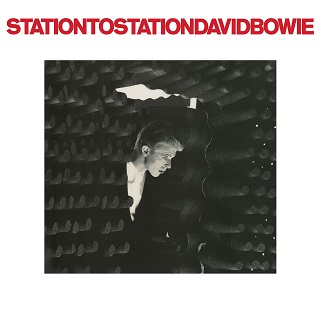
Station to Station is generally considered to be a departure from David Bowie’s earlier work and marked a significant shift in his artistic direction. That actually pissed me off quite a bit when I bought it. I’d got a paper round and could now afford to buy LPs. Bowie was my favourite, and this was his new one. I was hoping for another Ziggy Stardust or Diamond Dogs. I didn’t get it.
The album was released in 1976 and features a more experimental, electronic sound compared to his earlier work, which was largely influenced by rock and pop. Weirdly, I was going to get to Kraftwerk and that sort of stuff a few months later. As was often the way, Bowie was ahead of the game.
Station to Station was influenced by Bowie’s interest in the German electronic music scene, and features synthesizers, electronic drums, and other electronic instrumentation. The album also incorporates elements of funk, soul, and avant-garde music, and has been described as a transitional work that marked the beginning of his “Berlin Trilogy” of albums, which also includes Low and “Heroes”. It’s hard to remember in these days of easy access to just about anything musical with a few clicks, but getting hold of avant-garde Euro music wasn’t that straight forward in those days. If an LP wasn’t in the shops you could order it. But that required being able to pronounce the name.
Bowie was in fact a very good substitute for Can, Kraftwerk or Tangerine Dream. I regarded myself as an aficionado of the genre purely on the basis of owning Station to Station. (I didn’t get a Tangerine Dream album until the nineties when I picked Zeit up on a business trip to Köln. By that time the moment had passed and I have only played it a few times. On one of those occasions I was playing it on my laptop and left the room. My wife came in and found the sound it was making so alarming that she thought my laptop had broken and turned it off. It was a bit of an emperor’s new clothes moment.)
Lyrically, the album deals with themes of duality and transformation, and includes references to the occult and mysticism. The title track, “Station to Station,” is a ten-minute epic that features repetitive, hypnotic rhythms and explores themes of identity and spiritual rebirth. It was far and away my favourite track. I didn’t know what the lyrics meant but was sure they had some kind of significance.
“Wild Is the Wind” is a song written by Dimitri Tiomkin and Ned Washington. It was first recorded by Johnny Mathis in 1957 and later covered by a number of other artists, including Nina Simone, David Bowie, and George Michael.
The song was originally written for the 1957 film Wild Is the Wind, which starred Anna Magnani and Anthony Quinn. It was performed in the film by Johnny Mathis, who also recorded it as a single. Mathis’ version of the song was released as a single in 1957 and became a hit, reaching the top 40 of the Billboard Hot 100 chart.
Nina Simone’s version of “Wild Is the Wind” was released in 1966 on her album of the same name. Simone’s version of the song is considered one of the best and most memorable renditions of the song, and it has been covered by many other artists over the years.
David Bowie also recorded a version of “Wild Is the Wind” for his 1976 album Station to Station. His version of the song was released as a single and became a hit, reaching the top 40 of the UK Singles Chart. George Michael also recorded a version of the song, which was released on his album Older in 1996.
Overall, “Wild Is the Wind” has been covered by many different artists and has become a classic and enduring song with a rich history.
I never really liked Bowie’s version. It wasn’t really Bowie enough.
It also has “Golden Years”. This has the property of much of Bowie’s music of taking a while to sink in. It was a reasonably big hit if I remember correctly. Google tells me it reached No 8 in the UK. But it has stayed in my mind and it seems many others too. It is really danceable. It is musically sophisticated. And it sounds like nothing else.
The other single was “TVC15” which frankly is a bit rubbish. I’m not sure what it is even trying to do.
Much better is “Stay”, which is one of the songs that rely on Bowie’s ability to conjure up emotions with his voice in a way that can’t really be described. He is asking his lover to stay, but it’s clearly not working and he is in despair. It puts the listener through the wringer. “Word on A Wing” could easily be an episode from the same story. Again it is musically sophisticated and feels very mature. It’s hard to believe Bowie was only 28 at the time.
Overall, Station to Station represents a major shift in Bowie’s artistic direction and is considered by many to be a landmark work in his career. It received positive reviews upon its release and has been widely influential, influencing a number of artists in the electronic and experimental music scenes. It wasn’t what I thought I was buying but nearly 50 years later it has grown on me.
